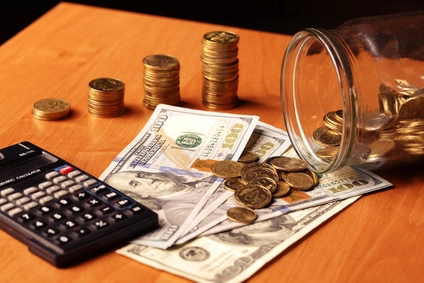 One of the most important things that long-standing, successful businesses have in common is a cash reserve.
One of the most important things that long-standing, successful businesses have in common is a cash reserve.
A cash reserve can help you pay employees and suppliers during hard times. It can help keep things moving if clients start paying slowly. It can help your business take on new growth opportunities. And it helps your business during a downturn.
If you have a cash reserve – great! If you don’t, start working on one immediately.
This article teaches you how to:
- Determine the correct size of your cash reserve
- Build the reserve
- Use financing to help build a reserve
- Use the reserve effectively
Figuring out the size of your company’s cash cushion can be complicated. There is a bit of science to it and you also have to use common sense. Ultimately, you need to pick a number that is both comfortable for you and achievable.
How much do you spend in a month?
Before you can start building a cash reserve, you need a good idea of your company’s monthly expenses. These expenses vary by business and industry. Some businesses have fairly regular expenses that change little from month to month. Seasonal businesses, on the other hand, can have most of their expenses concentrated in a few months. Each of these business types requires a slightly different approach.
If you keep an updated accounting system (and you should!), look at your cash flow statements for the past six months. Review how much you are spending every month. If the expenses are more or less the same, average all numbers to get your average monthly expenses.
If your company has concentrated expenses, the process changes a little bit. First pick a six-month period that includes your highest costing month. You need to calculate two numbers: one is the cost in a high-cost month, and the other is your cost for low-cost months. Finding the high-cost month is easy. Just look for the month with the highest expenses. For the second number, average the remaining five months.
How big should your reserve be?
The short answer is that your cash reserve should be sufficient for you to feel comfortable running your business. Some experts recommend having three months of expenses. Others recommend six months. I would suggest speaking to your CPA or financial adviser to determine the right number for your business.
Keep in mind that a large reserve is not always the right solution for everyone. It ties up cash that could be used to expand the business, so it limits profits and growth. In other words, keeping a large reserve actually has a cost.
How to calculate your cash cushion
If your business has steady costs across the year, multiply the monthly average cost you calculated in the previous section by the number of months you want in your reserve (e.g., three or six). For example, if your average costs are $20,000 per month and you want to keep a six-month reserve, multiply $20,000 x 6 months and your cash reserve would equal $120,000.
If your business is seasonal, on the other hand, then the math is a little different. You want to save enough so you can cover one high month and a few regular months. This is more easily explained with an example using the high-cost and low-cost month numbers discussed in the previous section:
Assume your high-cost month is $150,000 and your average regular month is $20,000. To build a cash reserve of six months, multiply $20,000 x 5 months ($100,000) to get the total for the first five months. Then add the $150,000 high-cost month total for a grand total of $250,000. This strategy ensures you are covered for one high month and five regular months.
How to build a cash reserve
Building the cash reserve itself is relatively simple. Determine the portion of your profits to direct to the reserve and transfer that money to a separate bank account. It’s that simple. Build the reserve until you reach that needed amount.
By the way, don’t touch the reserve funds unless you really need to. If you do use the reserve, put money back into it as soon as possible. This approach ensures your business is always covered.
How to use financing to build a reserve
One problem with building a reserve is that it has a cost: growth. The money you put into your cash reserve cannot be used to run your business or take on new clients. It’s not an easy trade-off: safety vs. growth.
There is one way to handle this problem. You can use financing to cover some of your business expenses while you build a cash reserve. This method can work well and help you build a reserve. However, it will eat some of your profits.
There is no right answer whether this solution is right for you or not. You must follow what your advisers, the market conditions, and your experience tell you.
Financing solutions
The following financing solutions can be used to help build a cash reserve and improve cash flow in general. These solutions can be used by small and large businesses alike.
1. SBA Financing
An SBA line of credit can be a great way to improve cash flow and build a reserve. Note that the SBA does not lend the money directly; instead, it works through partner banks. Larger businesses should consider the 7a program, while startups and very small businesses should consider Microloans (under $50,000).
2. Bank line of credit
Bank lines of credit can be great for your business – if you can get them. The problem is that getting a line of credit is hard, especially for small businesses and startups. To qualify, your company must have (among other things):
- Assets
- At least two years of profitable operations
- Sufficient cash flow to cover it
- Owners who have assets themselves
However, a line of credit gives you great flexibility since you only use it when – and if – you need it. A line of credit is often the most cost-effective solution.
3. Invoice factoring
Invoice factoring is a solution that allows you to finance invoices from slow-paying customers. It’s used by companies that work with commercial clients that pay their invoices in 30 to 60 days.
Companies that don’t have a cash reserve usually can’t afford to wait this long for payment. Factoring helps because, instead of waiting for payment, your company can finance the invoice. This solution provides immediate cash flow.
If your business clients pay slowly, using invoice factoring improves cash flow. It’s a great tool to use if you don’t have a reserve and want to build one. Here is a great explanation about how it works.
Other resources
To learn more about this subject, here is a great explanation about determining and building cash reserves by the folks of Score.
